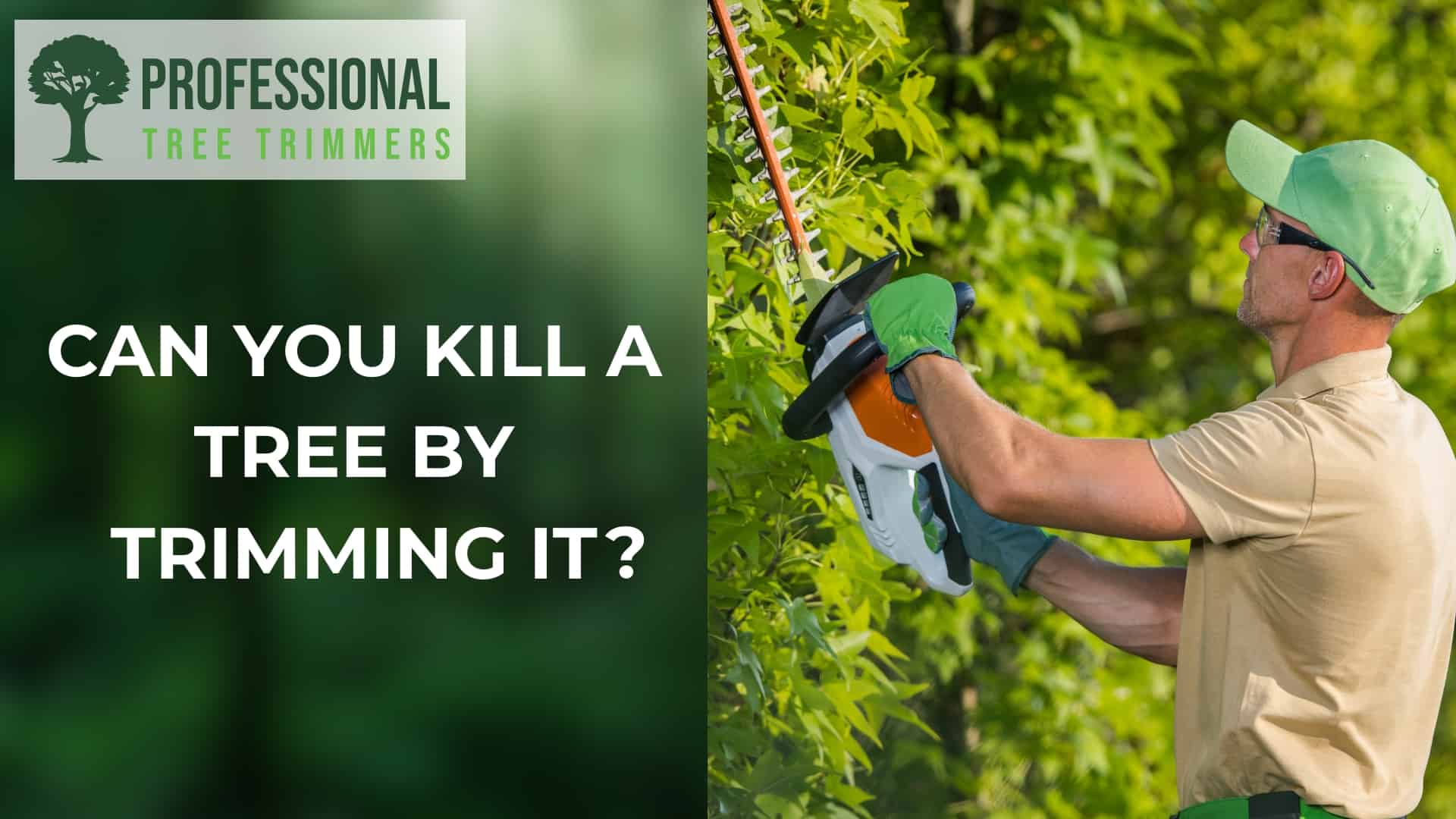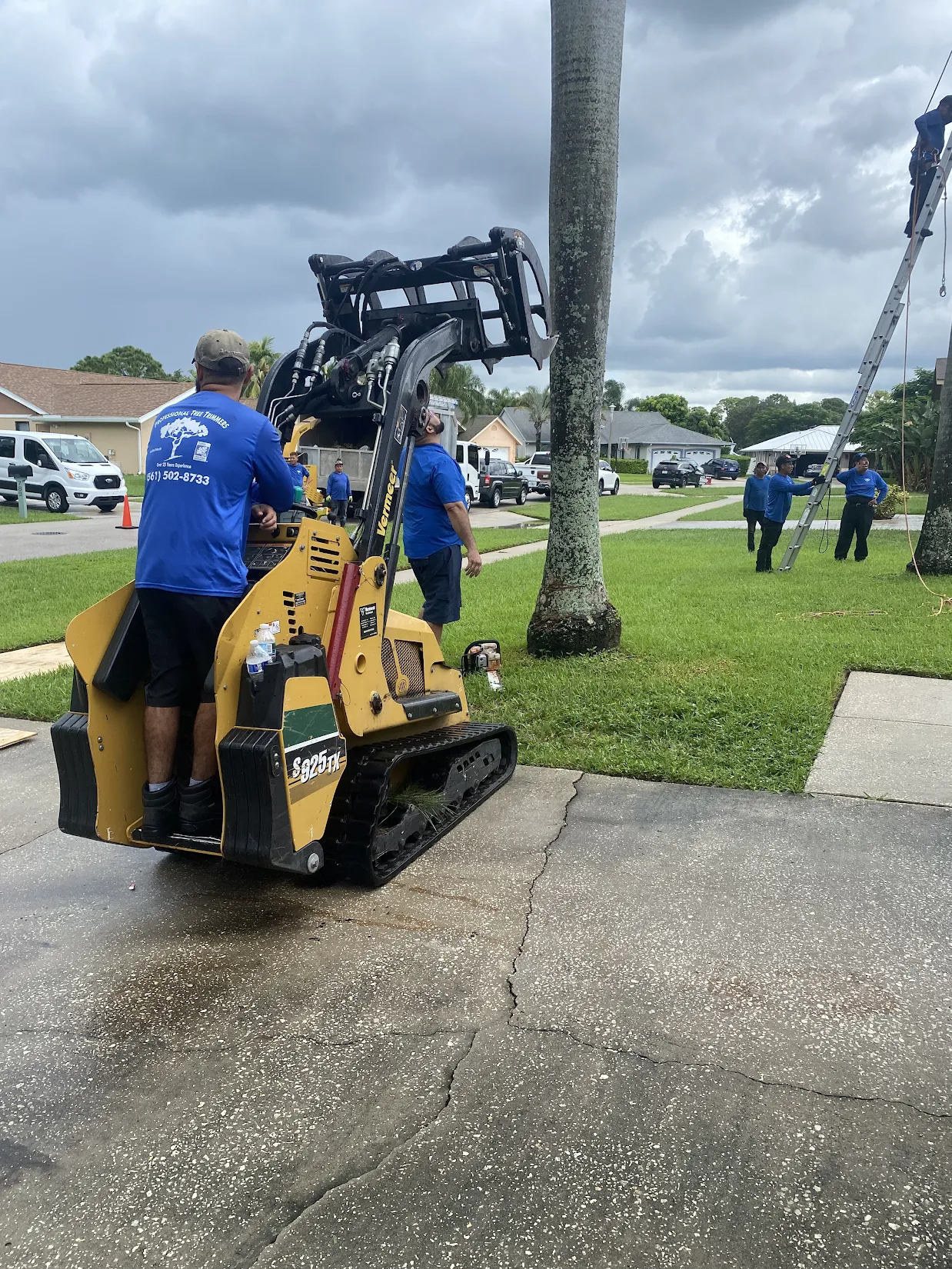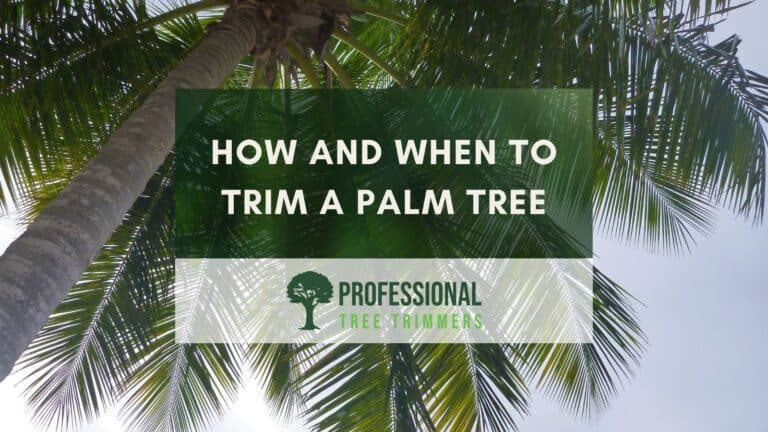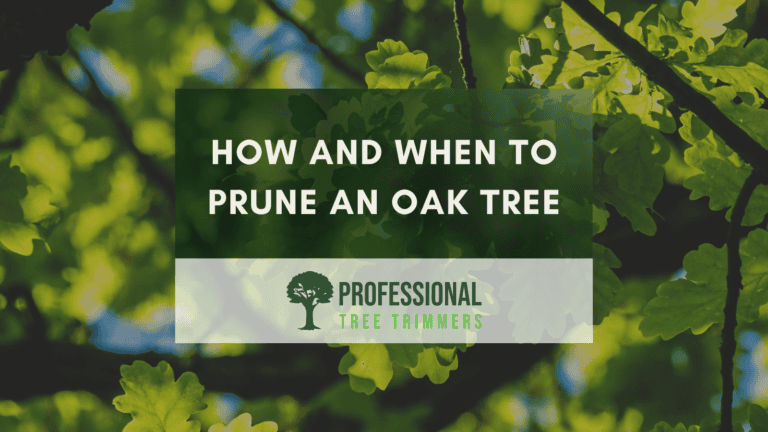Trimming trees is a common practice aimed at maintaining their health, appearance, and safety. However, improper pruning techniques or excessive trimming can potentially harm or even kill a tree.
Tree trimming involves the removal of branches and foliage to enhance tree structure, promote growth, and address safety concerns. While trimming or pruning is essential for tree care, improper techniques or excessive trimming can potentially harm the tree.
Most common mistakes during trimming consist of over-pruning, cutting branches too many lower branches too close to the trunk (flush cuts), or removing too much foliage can weaken the tree’s structure, compromise its ability to photosynthesize and make it vulnerable to diseases and pests. Exploring alternative options such as selective proper pruning, crown reduction, and seasonal timing can help mitigate potential harm to trees while achieving desired outcomes. Over time, these stressors can result in irreversible damage and ultimately lead to the tree’s demise.
Can Over-Trimming Lead to Tree Death?
Over-trimming, especially when vital branches are pruned, can diminish a tree’s ability to photosynthesize and produce food.
When the foliage of plants is excessively pruned, it disrupts the tree’s ability to capture energy for photosynthesis, depletes stored energy reserves, and alters its growth pattern. This weakens the tree’s structure and growth potential, increasing its susceptibility to diseases and ultimately leading to its demise. Hiring a professional for precise trimming is advisable to avoid such detrimental effects on the tree’s health.
To prevent over-pruning and its associated risks, it’s essential to adhere to proper pruning practices. Dead, diseased, damaged, and overcrowded branches should be selectively removed while avoiding excessive pruning that may weaken the tree. Regular monitoring and maintenance by certified arborists can ensure that trees receive appropriate care without compromising their health and longevity.
The Danger of Removing Too Much Foliage
Removing too many leaves from trees can lead to various dangers, including weakened branches, nutritional deficiencies, and increased susceptibility to diseases and pests.
Trees heavily rely on their leaves for essential functions such as photosynthesis and protection against environmental stressors. Removing too much foliage disrupts these processes, resulting in weakened branches that are more prone to breakage and making trees susceptible to nutritional deficiencies, diseases, and insect infestations. Over-pruning, especially in species like oaks, can permanently disfigure trees and compromise their structural integrity.
Proper pruning techniques, guided by certified arborists, are essential to minimize these risks and promote the long-term health and vitality of trees.
The Consequences of Topping Trees
Tree topping, the practice of cutting off the top of a tree, results in the removal of significant portions of a tree’s crown, leading to weakened structural integrity and reduced photosynthetic capacity. This harmful practice not only diminishes the tree’s ability to produce food but also increases its vulnerability to pests, diseases, and wind damage.
Furthermore, topping results in the rapid growth of weak, upright branches, known as water sprouts, which are prone to breakage and further compromise the tree’s health. Alternatives to tree topping include proper pruning techniques like crown reduction, which help maintain the tree’s health and aesthetics while promoting safe growth. Consulting with a professional arborist is crucial for effectively implementing these alternatives and ensuring trees’ long-term well-being.
Risks Associated with Excessive Branch Removal
Excessive branch removal poses significant risks to tree health and stability. When vital branches and trunk are pruned excessively, it diminishes the tree’s ability to conduct photosynthesis, reducing food production, weak structure, and poor growth.
It’s crucial to avoid topping and tipping, as these practices can lead to imbalanced growth, increased vulnerability to pests and diseases, and irreversible damage to the tree’s shape. Moreover, using appropriate pruning tools, treating wounds promptly, and practicing caution around power lines can further minimize the risks associated with excessive branch removal.
What are Some More Common Trimming Mistakes That Could Kill Your Tree?
Here are some common tree pruning mistakes that can negatively impact a tree’s health and growth. By understanding these errors, you can avoid them and ensure proper tree maintenance.
- Making flush cuts
- Leaving stub cuts
- Lion tailing
- Making heading cuts
- Over-trimming
- Not using proper tools like pruning saws
- Trimming below the branch collar
- Trimming at the wrong time of the year
How Much Can You Trim a Tree Without Killing It?
You can trim no more than 25% of a tree’s canopy in any given year to maintain its health and longevity. It’s a general rule that applies to most trees.
As a rule of thumb, refraining from removing more than a quarter of the tree’s canopy in a single season is a good start, but even this can be too much for some species. It’s a matter of balance, where each pruning cut must be considered against the backdrop of the tree’s health and the desired outcome.
When pruning trees, use a light touch and a thoughtful eye, focusing on maintaining the tree’s overall health and vitality. It’s about striking a balance between removing excess branches and foliage while ensuring the tree has enough resources to grow and thrive. The goal is to nurture and support the tree, not to harm it.
Does Cutting Tree Branches Kill the Tree?
Cutting large branches or too many branches can impact a tree’s future depending on the manner and measure of the cuts made. Proper pruning can lead to improved tree health, while improper pruning can cause more harm than good. Moderation and understanding the tree species are key factors in making informed decisions about tree maintenance. Pruning should always be done with precision and care to ensure the long-term vitality of the tree.
What Happens if You Trim a Tree Wrong?
Improper tree trimming can lead to various detrimental effects on tree health and stability. Poor pruning cuts, such as leaving torn bark or large stubs, create vulnerabilities for pests and diseases to penetrate the tree, ultimately compromising its internal health.
Moreover, practices like tree topping, which involve indiscriminately lopping off the tree’s top, or cutting branches, can result in deformed, unhealthy, and structurally unsound trees, particularly if done to achieve quick results near power lines or structures. It’s crucial to adhere to proper pruning techniques, considering factors like timing, tools, and cut placement, to ensure the tree’s well-being and structural integrity.
When to Safely Trim Your Trees?
Timing is crucial when pruning trees to avoid causing damage and minimize risk. Most trees should be pruned during the dormant season of mid to late winter, ensuring optimal healing and minimizing disturbance to growth patterns. Pruning during this time can promote healthy growth and prepare trees for the upcoming spring, while dead, damaged, or diseased branches can be removed at any time to maintain tree health and appearance.
Early Spring Pruning
Early spring pruning is an effective way to promote healthy growth and set the tone for the upcoming growing season. This is the optimal time to prune early bloomers after their floral displays, and late bloomers before they fully awaken. Pruning during this period can help direct the tree’s stored energy towards new growth that will bear fruit, flowers, or foliage in the long run. It’s about working with the tree’s natural patterns to create a beautiful, healthy, and strong tree.
Avoiding Fall Pruning
Trimming during fall can introduce diseases, stimulate new growth ill-equipped for freezing temperatures, and lead to a lack of blossoms in spring. It’s better to wait until the tree is in full dormancy before making cuts, avoiding the risk of cold damage and ensuring a healthier tree come spring. During fall, focus on enjoying the changing colors and avoid pruning your trees.
Should You Call a Certified Arborist for Tree Trimming?
Hiring a certified arborist for tree trimming provides numerous benefits beyond what untrained individuals or uncertified workers can offer. Certified arborists possess extensive knowledge and experience in tree care, ensuring that trimming is performed with precision and consideration for the tree’s health and growth patterns. They understand the importance of timing, and using proper techniques to avoid causing damage or promoting harmful pathogens’ spread. Additionally, certified arborists are equipped to handle larger branches safely, minimizing the risk of accidents or property damage.
Furthermore, they can identify and address issues such as dead branches or disease, promoting overall tree health and vitality. By engaging a certified arborist, homeowners can rest assured that tree trimming will be conducted in a manner that preserves the tree’s natural beauty while enhancing its structural integrity and minimizing environmental impact.
How Do You Trim Tree Branches Without Killing a Tree?
Trimming tree branches without killing the tree involves following proper trimming techniques and timing. Use the right tools, make proper cuts, avoid over-trimming, prune at the right time, and don’t over-prune your trees too much. By following these guidelines, you can maintain healthy tree growth and avoid harming the tree.
Can Pruning a Tree in The Fall Kill it?
Pruning a tree in the fall can introduce disease and cause vulnerable new growth, but it won’t necessarily kill the tree. It’s best to prune in winter months when the tree is dormant or in early spring for early bloomers.
Why Is Topping Bad for Trees?
Tree topping is the harmful practice of cutting off the upper portion of a tree, which can starve the tree by depriving it of its leafy crown needed for photosynthesis, ultimately weakening its structure and potentially leading to death. It is bad for trees because it can cause significant harm and can even result in their death.




